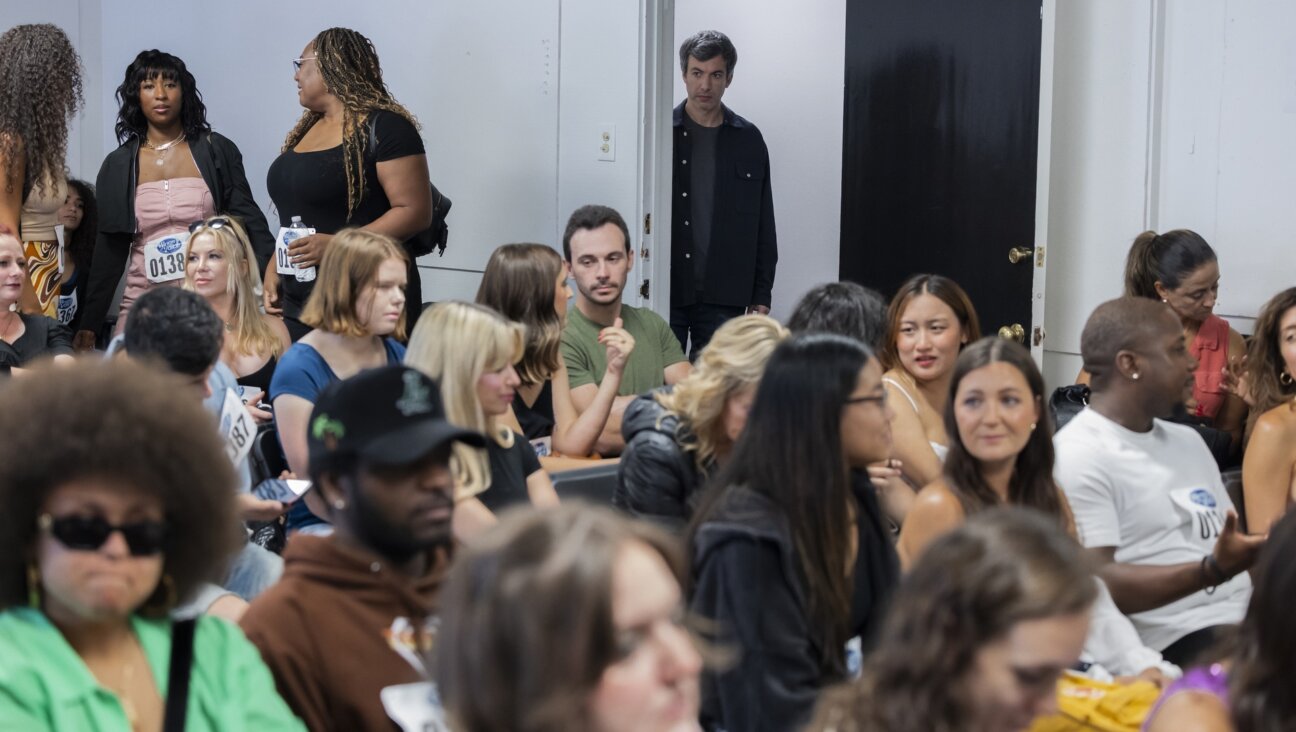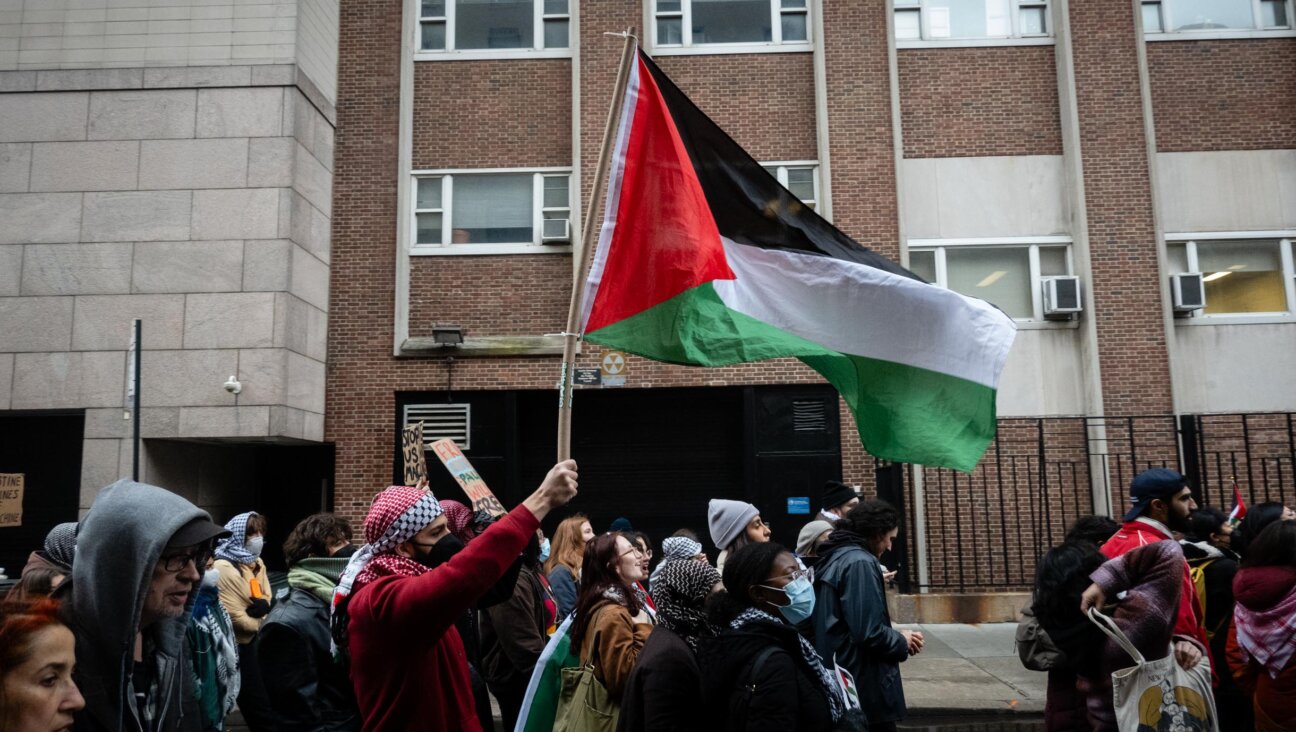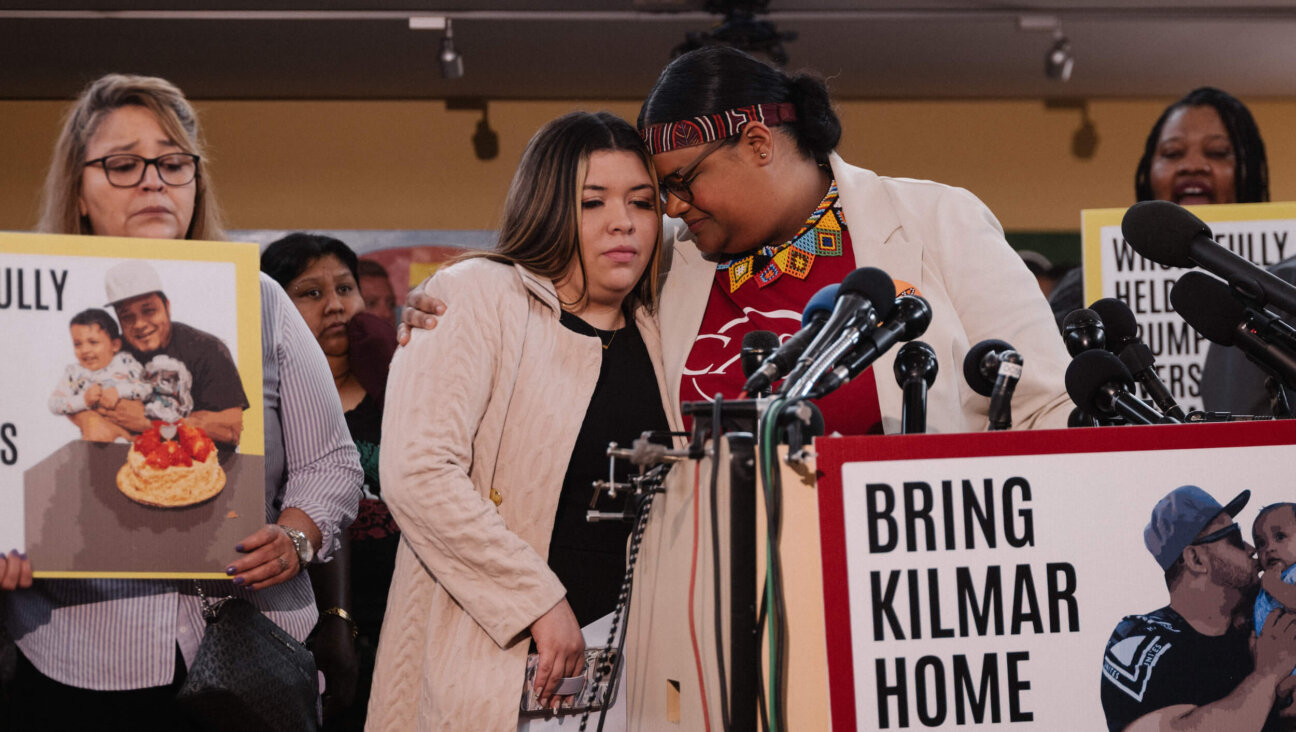Is the Outline of a Peace Deal Really All That Clear?
‘Truthfully,” Tony Blair said barely a month ago, “if you took any group of well-educated Israelis or Palestinians and said to them, describe on two sheets of paper the rough solution to the core final status issues — territory, right of return, Jerusalem — they could probably do it roughly along the same contours of a solution.”
The Quartet’s envoy to the Middle East is far from the only one to hold this belief. Indeed, it has become common wisdom that the parameters to a successful two-state solution are quite clear.
This notion that the contours of a solution are obvious, however, is patently incorrect. Worse, it obfuscates the real areas of controversy that separate Israelis and Palestinians and that have to be addressed if we are to reach even a partial solution to the conflict.
What is perhaps most striking about the substantive gaps ignored by Blair and others is that they have widened in recent years — primarily due to changing Israeli positions on final status issues since the abortive summit at Camp David in July 2000. Indeed, the Palestinian side has been remarkably consistent in its positions, which reflect the belief that having conceded Israeli sovereignty over the state that lies within the 1967 lines, the Palestinians cannot be expected to offer additional concessions. The changes in Israel’s positions are in many ways an adjustment necessitated by Israeli recognition of the Palestinian refusal to offer appreciable concessions on the core issues.
Let us take the issue areas enunciated by Blair one-by-one and examine just how considerable the gap now is.
We begin with territory. At Camp David, Prime Minister Ehud Barak and Palestinian leader Yasser Arafat were close to agreement on the settlement blocs Israel would annex, disagreeing mainly on the ratio of territorial compensation Israel would offer. Barak even allowed that parts of the Jordan Valley which Israel deemed vital for security reasons could be turned over to the Palestinians after an agreed-upon number of years. By 2003, when the United States occupied Iraq, even that security necessity became moot, as Israel could look east all the way to the Iraq-Iran border and see only friendly neighbors.
Since then the settlement blocs have continued to grow, while empty areas adjacent to the Green Line that Israel could offer to the Palestinians in return have become scarcer. Moreover, the Olmert government has correctly perceived the strategic value of a Gaza-West Bank corridor for a Palestinian state and attaches greater value to it within the framework of territorial swaps. Finally, with Iraq in collapse and Iran emerging as the hegemon in all or most of a future Iraq and thereby directly threatening Saudi Arabia and Jordan, Israel can no longer easily cite a date certain for transferring control over the Jordan Valley to a Palestinian state.
Moving to the right of return issue, the Israeli mainstream has in recent years concluded from Palestinian demands and behavior that the ideal Palestinian vision of a two-state solution comprises an Arab state alongside a state called Israel that is understood by Palestinians to be a binational Jewish-Arab state. Israel as Palestinians wish to see it would have a fast-growing indigenous Arab population and would confront pressures to absorb Palestinian refugees based on Israeli de facto recognition that in 1948 it was born in sin by expelling the indigenous Palestinians.
Aspects of this position are now reflected in mainstream Israeli Arab position papers that have been published during the past year. This means that the future status of Israel’s Palestinian citizens has now become yet another Israeli-Palestinian issue characterized by a growing perceptual gap. This position is also clearly reflected in the refusal of the Palestinian leadership to acknowledge, as part of the successful peace process envisioned by the Olmert government, that Israel is a Jewish state as constituted in 1947 by United Nations General Assembly Resolution 181 — the authoritative document under international law that created a two-state solution to the conflict.
The Israeli “Jewish state” demand was nowhere on the agenda at Camp David in 2000. Today, however, with its very different perception of the ultimate Arab understanding of a two-state solution, Israel cannot permit itself in final status negotiations to accept even the symbolic return of a few thousand refugees — unless the Palestinians renounce the right of return and accept Israel as a Jewish state (with a protected Palestinian national minority). The gap between the two sides’ positions on this issue is considerably greater today than that reflected at Camp David, or in the parameters laid out by President Clinton before he left office, or in the Geneva Accords drawn up in 2003.
Finally, Jerusalem. It was only at Camp David and thereafter that leading Palestinian spokesmen, from Arafat and Mahmoud Abbas on down, informed their Israeli counterparts that in fact there had never been a Jewish temple on the Temple Mount. According to authoritative Palestinians, it was only at Camp David that the Palestinian side realized for the first time how important the Temple Mount actually is to Jews.
Never mind that prior to the conflict, Arab historiography readily acknowledged that the mosques on the Temple Mount, or Haram al-Sharif as it is known in Arabic, were deliberately built on the ruins of the Temple in order for Islam to benefit from the perception of being a continuation of Judaism. Today the Palestinians are unable to accept a solution that acknowledges the historic Hebrew roots of the mount and provides accordingly for Jewish access. And mainstream Israel is unable to accept anything less, insofar as it would officially feed the Palestinian narrative that the Jews of Israel are merely a band of colonialists who lack roots in the land that they took by force.
That, Mr. Blair, would only fuel the conflict, not end it.
Yossi Alpher, a former senior adviser to Prime Minister Ehud Barak and former director of the Jaffee Center for Strategic Studies, is co-editor of the bitterlemons family of online publications.
The Forward is free to read, but it isn’t free to produce

I hope you appreciated this article. Before you go, I’d like to ask you to please support the Forward.
Now more than ever, American Jews need independent news they can trust, with reporting driven by truth, not ideology. We serve you, not any ideological agenda.
At a time when other newsrooms are closing or cutting back, the Forward has removed its paywall and invested additional resources to report on the ground from Israel and around the U.S. on the impact of the war, rising antisemitism and polarized discourse.
This is a great time to support independent Jewish journalism you rely on. Make a Passover gift today!
— Rachel Fishman Feddersen, Publisher and CEO
Most Popular
- 1

Opinion My Jewish moms group ousted me because I work for J Street. Is this what communal life has come to?
- 2

Fast Forward Suspected arsonist intended to beat Gov. Josh Shapiro with a sledgehammer, investigators say
- 3

Politics Meet America’s potential first Jewish second family: Josh Shapiro, Lori, and their 4 kids
- 4

Fast Forward How Coke’s Passover recipe sparked an antisemitic conspiracy theory
In Case You Missed It
-

Film & TV In ‘The Rehearsal’ season 2, is Nathan Fielder serious?
-

Fast Forward Pro-Israel groups called for Mohsen Mahdawi’s deportation. He was arrested at a citizenship interview.
-

News Student protesters being deported are not ‘martyrs and heroes,’ says former antisemitism envoy
-

Opinion This Nazi-era story shows why Trump won’t fix a terrifying deportation mistake
-
Shop the Forward Store
100% of profits support our journalism
Republish This Story
Please read before republishing
We’re happy to make this story available to republish for free, unless it originated with JTA, Haaretz or another publication (as indicated on the article) and as long as you follow our guidelines.
You must comply with the following:
- Credit the Forward
- Retain our pixel
- Preserve our canonical link in Google search
- Add a noindex tag in Google search
See our full guidelines for more information, and this guide for detail about canonical URLs.
To republish, copy the HTML by clicking on the yellow button to the right; it includes our tracking pixel, all paragraph styles and hyperlinks, the author byline and credit to the Forward. It does not include images; to avoid copyright violations, you must add them manually, following our guidelines. Please email us at [email protected], subject line “republish,” with any questions or to let us know what stories you’re picking up.















